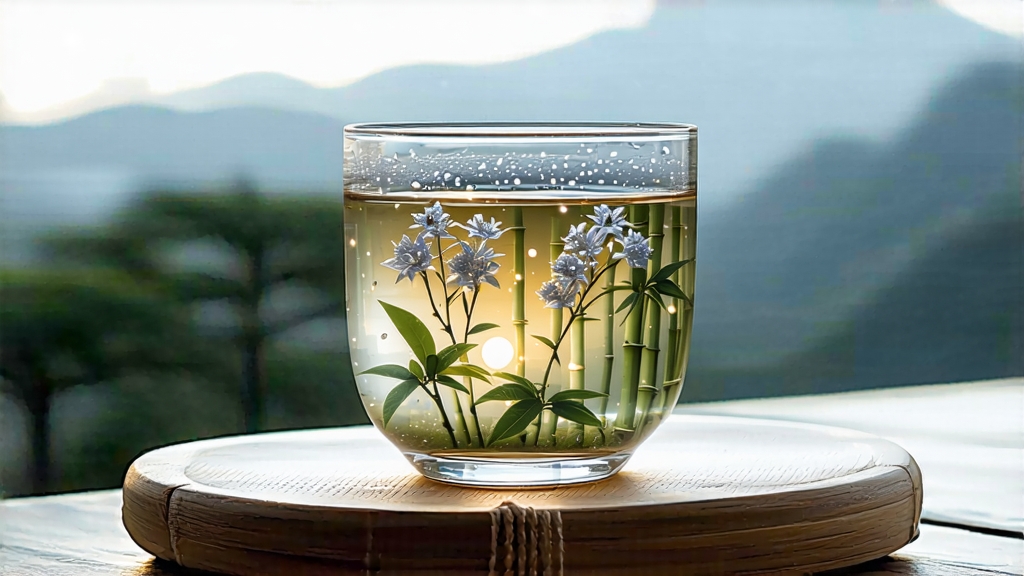
Bai Hao Yin Zhen—“Silver Needle of White Down”—is the most aristocratic expression of China’s white-tea family. While casual drinkers often equate “white tea” with any pale liquor, connoisseurs know that Yin Zhen is the category’s original and purest form: only unopened leaf buds, silver-green in the dry state, shimmering with a tracery of white hairs that look like frost caught in moonlight. One sip can silence a room; its aroma is closer to a mountain meadow at dawn than to anything ordinarily called “tea.”
History: from imperial tribute to minimalist revival
The first written record of “white tea” appears in Song-dynasty treatises (960-1279), yet those texts describe a compressed cake of light-colored leaf, not the loose buds we know today. The modern pedigree of Yin Zhen begins in the 1790s, when Fujian’s Fuding county switched from compressed tribute cakes to loose, bud-only picking demanded by the Jiaqing Emperor’s court. By the late nineteenth century, Silver Needle was already Europe’s costliest Chinese tea, arriving in London via clipper ship at prices that rivaled first-growth Bordeaux. The 20th-century wars and the Communist era’s focus on volume nearly erased the craft, but a small circle of state-run factories kept seed gardens alive. Since China’s economic opening in the 1990s, Yin Zhen has re-emerged as the flagship of the minimalist, low-intervention aesthetic now celebrated by specialty tea markets from Melbourne to Montreal.
Terroir: why Fuding and Zhenghe taste like different poems
Authentic Yin Zhen is produced in only two micro-zones along Fujian’s northern coast. Fuding, closer to the East China Sea, sits on weathered granite soils flushed with oceanic fog; its tea carries a marine salinity and a lilac top note. Forty kilometers inland, Zhenghe nestles in a bowl of red laterite at slightly higher elevation; cooler nights translate into denser bud tissues and a warmer, honeyed cup. Both counties grow the small-leaf cultivar “Da Bai Hao” (Big White Down), yet the same genetics, interpreted through divergent weathering and microbial air flora, yield liquors as distinct as Chablis and Meursault. Within each county, village-level differences—morning cloud cover, bamboo-to-tea ratios, proximity to orange groves—create further micro-cuvées that collectors chase with Burgundian fervor.
Harvest calendar: the nine-day window
Yin Zhen is picked only when the spring bud has reached “one-inch spear” length but before the first scale leaf unfurls—typically between March 15 and April 5, depending on lunar heat accumulation. Experienced pluckers use a diagonal snap that keeps the bud intact and avoids the “fish-tail” nick that would later oxidize into a rust blemish. A top plucker gathers barely 500 g of fresh buds per hour; 30,000 buds—an entire day’s work for three people—yield just 500 g of finished tea. Rain-day buds are rejected because surface moisture extends withering time and flattens aroma; instead, farmers wait for “crystal mornings” when overnight dew has been swept away by a gentle offshore breeze.
Craft: the art of doing almost nothing
White tea’s minimalism is deceptive; the fewer the steps, the more exacting the timing. Once baskets of buds reach the farmhouse, they are spread on bamboo trays exactly 2 cm thick—any deeper and enzymatic heat builds up; any thinner and the buds desiccate too fast, locking in grassy astringency. The first six hours are crucial: indoor moisture is allowed to drop from 80 % to 68 % while ambient temperature hovers at 22 °C. Then trays are moved to a shaded corridor where filtered sunlight and cross-ventilation continue the slow dehydration. No rolling, no pan-firing, no baking—just 36 to 48 hours of monitored withering during which polyphenols oxidize microscopically, generating the tea signature apricot and cucumber-melon notes. A final 20-minute “foot-dry” at 40 °C reduces moisture to 5 %, stabilizing the bud for storage without caramelizing its sugars. The entire cycle is choreographed like a